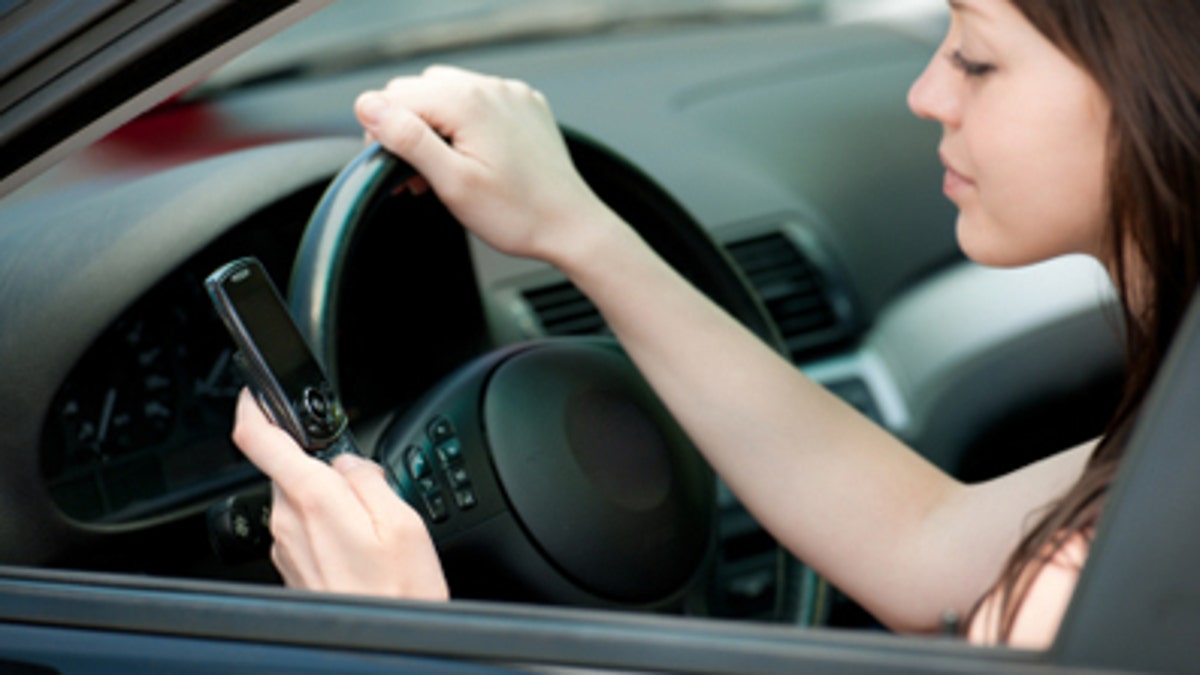
Some drive 100 miles per hour, take corners way too fast and brake aggressively.
No, we’re not talking about NASCAR drivers. Many teen drivers are too young and optimistic to think about petty annoyances like speed limit signs. Others tweet and text their friends while driving.
Despite stern lectures from parents, the problem is not going away. A new study by Liberty Mutual Insurance and Students Against Destructive Decisions (SADD) found that almost 3 out of 4 teen drivers, or 68%, had narrowly avoided an accident in the past year. According to the Department of Transportation, three people die per day because they are texting while driving.
Now, several automakers are developing “teen-proofing” features that help parents track the location of the car, warn them when they enter danger zones and even set in-car speed limits.
Ford’s MyKey technology is the most direct of those available. Using a keyfob that can be programmed with an on-board display parents can limit the vehicle’s top speed to 80 mph. The key also mutes the radio until the driver buckles-up and sets a volume limit for the audio system.
Ford safety strategy and planning manager Andy Sarkisan told FoxNews.com that the company researched whether parents wanted direct monitoring features that warn them about excess speed and found the parents viewed those as unreasonable. Sarkison says MyKey encourages communication between parents and teens because it is not so heavy-handed that it betrays privacy.
Later this year, Ford will release an enhanced version that provides more speed limit options. The new MyKey features will be available on the Ford Taurus and Explorer initially.
OnStar’s new Family Link feature runs on a home computer and works with most GM cars. Owners can see where their car is on a map and have text or e-mail messages sent at various times of the day with the location info. OnStar CIO Jeff Liedel told FoxNews.com that the opt-in nature of Family Link means better privacy for teens and parents.
“OnStar does not locate the vehicle or send alerts without a request from the subscriber to do so,” says Liedel. “Periodic messages in the vehicle alert drivers that Family Link is activated.”
Meanwhile, the Hyundai Blue Link system, which is already available in the 2012 Sonata and will continue to roll out to other cars, sends a text message, automated phone message, or e-mail when a driver exceeds a set speed limit, is out after a designated curfew, or leaves or enters a pre-determined “geo-fenced” zone. Blue Link offers added safety features, including the ability to have text messages read to you.
But, teen-proofing a car might require more than just limiting speeds and warning you when a teen drives out of safe area. Part of the answer is in education.
Ford has a program called Driving Skills for Life (DSFL) (www.drivingskillsforlife.com), which teaches kids basic safety precautions like powering down your phone before you get in the car. Illinois offers a program based on DSFL that Ford says has reduced teen driving fatalities by 50%.
Heather A. Lottmann, a Kansas City attorney who works on personal injury cases involving teen motorists, says the teen-proof car is a good idea but may be hard to attain. She says one key to safer teen driving has to do with advanced tech in the car, such as blind-spot detectors and back-up cams.
She says distracted driving laws, which make it illegal to text and drive, also helping in some states.
Lottmann told FoxNews.com that the new car technology is a step in the right direction. She says the tech is not perfect, though. Having the car read text messages aloud helps, but does not prevent the teen from sending texts. She likes the Ford MyKey system because it works: teens love their music, and MyKey forces teens to buckle their seat belt in order to listen to it.
Justin Bieber, the teen musician who is a spokesperson for the PhoneGuard app that disables texting when a car is in motion, told FoxNews.com that education and phone apps are the answer, and he does not think a car can be teen-proofed entirely, although the new technology can help.
“The more car companies can do to help reduce distractions the better. But, it is a group effort amongst parents, teens, car companies, and cell phone companies,” he says.
Short of building a force field around every car, there are only so many tech advancements that can help. Lottmann says, ultimately, the answer is in teaching kids better safety measures.